Each spring, when families across Florida have the opportunity to apply for an education savings account—as more than 220,000 did this year—they’re met with an onslaught of options for how to use the state school choice subsidy.
Suddenly, instead of their in-district options, they have more than 2,000 private schools at their fingertips, as well as the option to use the funding for homeschooling expenses, tutoring, therapies, curricular materials, and more. In Broward County alone, parents have more than 366 private schools to choose from. How do they assess each one to make their decision?
Public education has traditionally relied on standardized measures like test scores to ensure accountability and transparency. Yet as school choice expands and parents increasingly seek out alternatives to district schools, those traditional metrics are shifting. Some argue that these measures will remain essential, while others believe the market will weed out underperforming schools based on parental demand.
Regardless, the explosion of choice programs across the country is pushing many in the education policy sector to rethink how schools should be assessed so parents can easily access the information that’s most important to them.
While private school choice is a major motivating factor, it’s not the only one. Many families think their child is doing fine in public schools and don’t take advantage of an available scholarship, when in fact their child is falling behind. According to Learning Heroes research, a whopping 79% of parents say that their children earn Bs or better, when in reality only 30% of students demonstrate proficiency or above in reading and math on the National Assessment for Educational Progress. That’s an enormous disconnect.
As it stands, states, districts, and schools rarely provide school-quality information—and if they do, they’re not doing it very well. In Florida, the state runs a searchable database of schools where funding from education savings accounts can be used to help cover tuition. But the database only includes a handful of filters, like non-religious schools, religious schools, and military schools.
All of this begs the crucial question: What data and information do parents need to ensure informed choice and transparency in this era of increasing access to school choice? The answers to this critical question will shape the future of school choice and parental decision-making.
To explore this question, GreatSchools invited six education experts from across the sector to weigh in on how transparency should evolve alongside the rise in education choice. We asked them not for a perfect or polished solution, but instead to pitch bold, unconventional ideas worthy of consideration—with the ultimate goal of providing roadmaps for policymakers, educators, and families navigating this changing landscape. Here’s what they had to say.
When it comes to the information needed to ensure informed choice and transparency, schools should prioritize sharing details of their educational programs, including curriculum offerings, socioemotional initiatives, community partnerships, and supports for English learners and neurodivergent learners. Anything that helps parents better understand the school’s priorities and goals contributes to greater transparency.
Information about staffing, too, has become increasingly important, as parents are eager to know more about the educators and other school staff serving students.
Examples of student work are also crucial to understanding the type of educational experience offered.
Another significant factor for families is a school’s budget, including true cost allocations for personnel, professional development, and enrichment.
Finally, parent engagement and student voice matter. Schools should communicate how families can get involved and what’s expected of them. Student perception data has been shown to have a powerful correlation with student learning and teacher quality. Sharing that data—while ensuring data quality and integrity—could be a powerful addition to the picture schools present.
We shouldn’t pretend that measurement is easy. People of good conscience can disagree about what to measure. They can disagree about how to measure. Measurement isn’t costless, and attributing credit for outcomes can be challenging.
Measurement can win friends and make enemies. While measurement is supposed to be rational, the systems that education reformers hope to influence are inherently political. Measurement is high stakes because it determines access to resources (in the case of public K–12 education, $769 billion in federal, state, and local spending in 2021-2022).
Measurement is also an act of power. Laura Esquivel noted that “whoever controls information, whoever controls meaning, acquires power.” Education reformers measure what we value, but often we’re not asking communities what measures they value and, by extension, their definition of success. When we don’t ask communities their definition of success, we risk imposing our own.
Additionally, behind every measure there are people—students who want the full opportunity to realize their best destinies, and parents who have hopes and fears about that opportunity being granted or denied.
Capturing education measures is not rocket science—we’re not trying to send people to the moon. It’s not necessarily data science- most measures we want exist or can be captured. It’s political science: do we, as reformers, have the will to share these measures, holding institutions, systems, and ultimately ourselves accountable for achieving results?
Many pages of ink have been spilled about the dangers of “teaching to the test,” education shorthand for the problem of optimizing for a single variable at the expense of (often more important) measures of success.
Most of these conversations focus on how this dynamic manifests in the classroom. But I’d argue it’s even more damaging at the meta level, where the education establishment all but ignores the nuanced, arguably more complex data that matters most.
As a result, K–12 schools have reverse-engineered themselves around quality proxies like student-to-teacher ratios, Advanced Placement course participation, or college acceptance rates as opposed to college completion, economic mobility, or other metrics that indicate paths to lasting human flourishing.
While small class sizes and college matriculation are both worthy goals for K–12 schools, these are outdated now that we have far more relevant— and contemporaneous—measures of success.
Today, technology in the hands of professional educators can be used to quantify growth and learning velocity—every day, in real time. We can personalize academic programs around not just lofty aspirations, but also the pace at which a student can achieve them. What’s more, we can give parents a window into the how and why behind the metrics to empower them to reinforce what happens in the classroom.
Parents need various kinds of information to assess school quality. First, crowdsourced reviews from other parents offer invaluable insights. Just as we rely on recommendations for services from plumbing to healthcare, providing parents with other parents’ reviews of a school is key. The wisdom of crowds is a reliable indicator of quality.
Second, parents want to know about the school’s offerings, such as individualized attention, curriculum variety, and support for diverse learners. Key factors include student-to-teacher ratios, availability of arts, music, foreign language, afterschool programs, and advanced classes like AP or IB, as well as support for students with IEPs, English language learners, or advanced learners.
Third, school stability is crucial. Information on principal and teacher retention helps gauge the school’s long-term strength. High turnover can signal dissatisfaction with leadership or instability.
Finally, parental involvement matters. Parents value opportunities to engage with the school through decision-making, events, and regular meetings with teachers. These aspects help parents make informed choices about their child’s education.
K–12 education is a public and a private good, and public investment in schools should reflect this dual role. Systems that provide information to families must support them in meeting their children’s individual needs while also promoting broader community interests. To do so, they should be transparent, accessible, comprehensive, and comparable—without placing undue burdens on schools or discouraging innovation through a one-size-fits-all model.
To address these tradeoffs, an information system should report on a small set of comparable indicators—such as graduation rates and scores on common assessments for selected grades—while also requiring schools or local education agencies to supplement with additional indicators that align with their visions and priorities. Schools should report at least one indicator in each of four key areas: academic learning, college/career readiness, civic development, and support for students’ well-being. Schools could incorporate additional indicators at their discretion.
Such a system would allow families and communities to evaluate schools on their most essential functions. Making this information accessible will require an intuitive, interactive reporting system. The continuous involvement of stakeholders (including students) will also be essential to ensure the data help inform private and public decision-making.
Transparency goes both ways: Schools need to provide data to parents, but they must also ask families what they need, creating a two-way street of clear and direct information sharing.
Parents in Oakland, California, have a choice in where to send their child to school, but only if they exercise it. Too often, that choice is exercised by the higher-income white families in the district—even though they account for just 10% of students—and not the families of color who represent the majority of enrollment. At our kindergarten-to-college elementary partner school, Cox Academy, we wanted to fix that and set a goal of 100% of families exercising their choice when it came time to select a middle school.
To ensure transparency, we recruited 30 parents to join a leadership cohort in early spring 2025. They shared their own educational experiences and their goals for their children. Most of these parents never had access to a quality education, yet every one of them wanted their own children to go to college.
Families reflected on what types of middle schools might match their values: Yes, they want schools where the majority of students are on grade level in math and reading, but they also want schools that will help students build confidence, knowledge, and leadership skills. We showed families how to use GreatSchools.org to conduct research and where to sign up for school tours, and encouraged them to tap their personal networks for first-hand feedback. Two weeks later, they spent the session sharing their research and persuading one another about the benefits of the schools they were considering.
This type of transparency is critical for making choice successful. It is only possible when schools commit to sharing clear information with parents—and ask for that kind of transparency in return. When these two things are in place, true transformation is possible.
Measurement and assessment are complex, but the stakes for families couldn’t be higher. If we want to provide the data that families want and need to make informed choices about their education options, then we need to engage them to understand their goals for their children’s educational journey.
As state education leaders chart a new path forward, they will have to weigh which traditional metrics are worth retaining and which need reimagining altogether. In this next phase of school choice expansion, we need to figure out—and fast—what kind of data is most useful.
Jon Deane is the chief executive officer of GreatSchools.org, a national education nonprofit that supports parents through every stage of their child’s education. He has more than two decades of experience in K–12 education, previously serving as a math teacher and school administrator.










